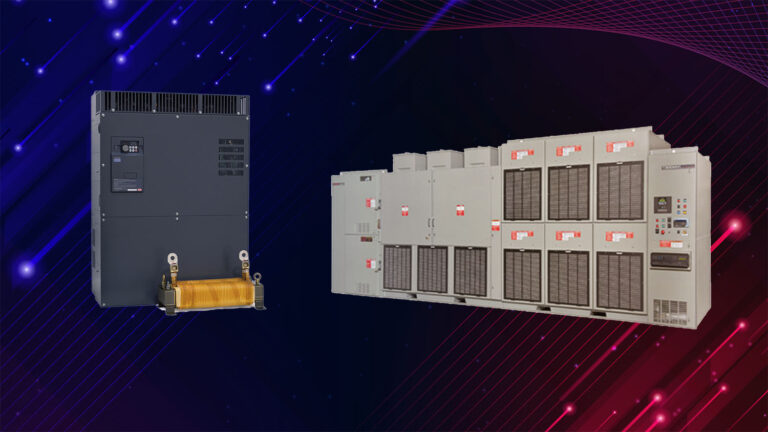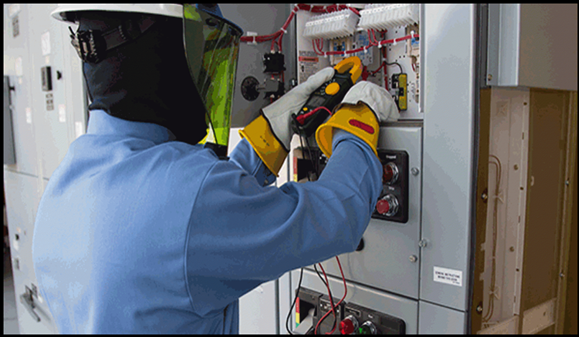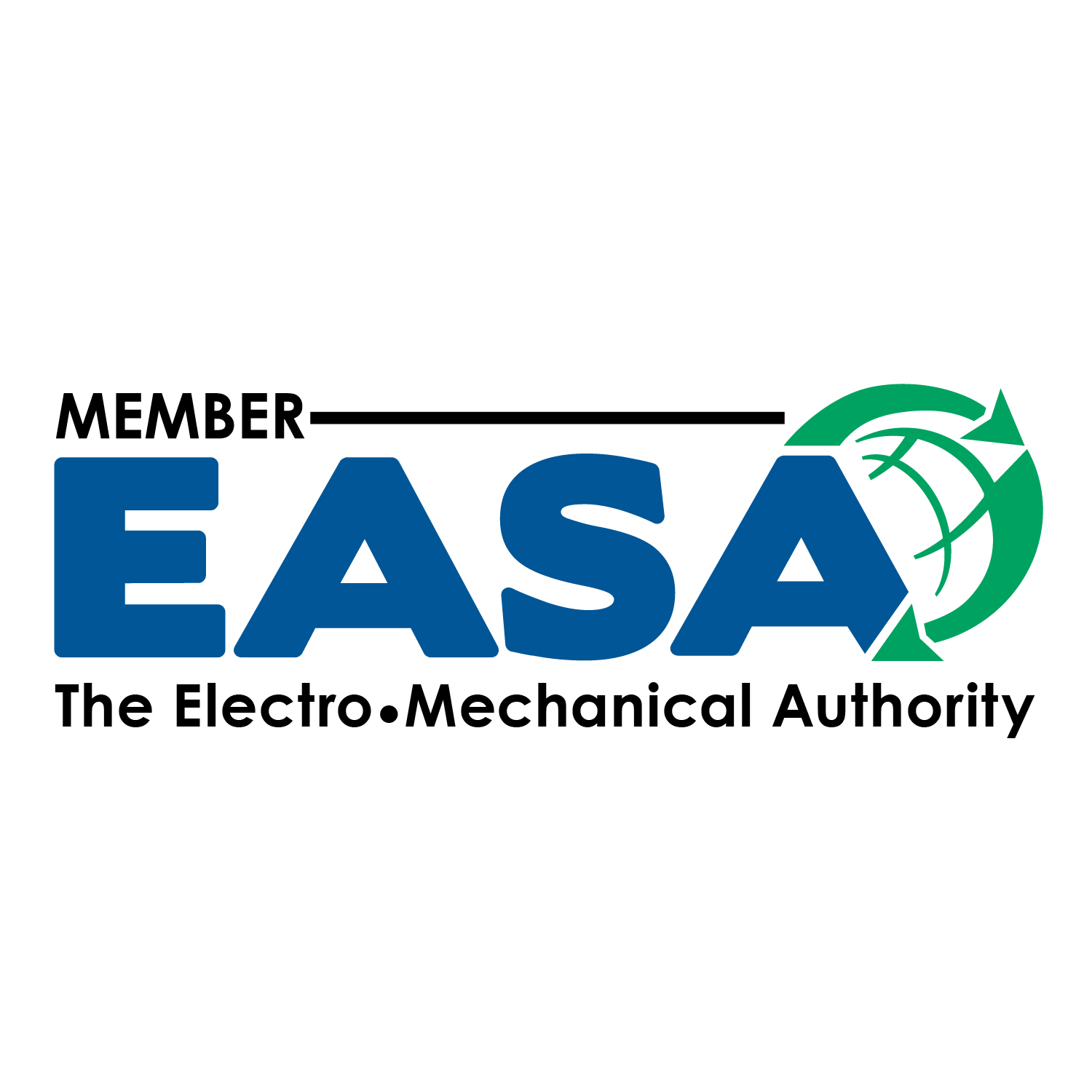
Should You Go with Medium Voltage?
Most technicians, engineers, etc. in the industry are familiar with low voltage (LV) drives and are aware of their advantages and limitations. Not many people are aware of the advantages and limitations of medium voltage (MV) drives since they have not been as commonplace. In many applications you could use either a low or medium voltage drive and get a good result. But if you are stuck deciding between the two, this article should give you a good starting point to help make your decision.
Complexity
You might think that MV drives would be much more complex than LV drives. And most of the time you would be correct! However, in certain applications LV drives have many limitations that have to be solved with other pieces of equipment such as harmonics, leading power factor, motor insulation, motor bearing currents, EMI/RFI, not meeting your area’s utility standards, etc. This makes installation of a LV motor and drive more complex than their MV counterparts.
– However, in just looking at the drives themselves, the advantage goes to the LV drives for less complexity.
Qualifications of Service Technicians
Most technicians are trained and qualified to work on low voltage equipment, these technicians will not have the proper training or comfort level to work on MV drives. A better trained and more experienced technician is required to work on medium voltage drives due to the expense and critical nature of these drives. Because of the experience required, these technicians are harder to find.
– In relation to ease of finding a qualified technician, the advantage goes to LV drives.
Physical Size
Medium voltage drives generally take up more floor space than low voltage drives. But the addition of input/output transformers on LV drives will generally make the medium voltage drive the smaller option.
– The advantage for physical size is a tie.
Cost
For most applications, cost is one of the most important factors. Traditionally most engineers select a MV motor around 250hp and higher. Due to the high cost of MV drives, this transition point has been much higher when motors were used with a VFD. As MV drives have increased in reliability and dropped in cost, the current crossover point is now around 600hp. This varies dramatically with the application, however. In order to properly assess for cost you need to ask yourself a few questions.
- Are you utilizing an existing motor and what is the motor voltage?
- Do you need a step-down transformer to feed the drive?
- Are the torque characteristics of the motor such that you cannot use a VFD output transformer?
- Are you replacing an existing VFD?
- Is the motor existing or new?
- How large is the motor?
- What size conduits & what is the cost of copper wire?
Transformers, harmonic filters, and sine wave output filters can up the cost of a LV motor significantly.
– But in the end, the advantage of cost is a tie between LV and MV drives because of the many variables that come in to each personalized scenario.

Safety
When working on a low voltage drive, you typically need the equipment energized and the cabinet open. This presents a high risk of arc flash. With a medium voltage drive you must work on them de energized, which reduces the risk of arc flash to basically zero. MV drives also have many safety enhancement features built into them such as ground fault detection, major faults will remove permissives and drop power to the drive, energy stored within VFD capacitors is reduced to 50V or less in 15 minutes with visible LED indicators, doors on MV enclosures either include Kirk key interlock to upstream feeders or are electronically interlocked to drop incoming power, and the cabinet doors must be clearly marked to warn of voltage hazards, multiple electrical sources, etc.
– The advantage for safety goes to MV drives.
Reliability
The lifespan of a LV drive is, at best, around 20 years if covered and kept in a positive pressure system with filtered air. Without these conditions, the typical lifespan is 3-7 years. With a medium voltage drive the lifespan of the newer drives is anywhere from 15-40 years depending on cleanliness of the area it is installed. (These numbers are lifespan of the drive, not Mean Time Between Failure (MTBF). MTBF varies greatly for each individual drive based on its application).
– Clearly, the advantage in reliability goes to MV drives.
Motor Insulation
Motors used with VFDs often require upgraded insulation to resist the high voltage spikes generated by the drive. With LV motors operating from utility power we see a smooth sine wave output, while motors operating from a VFD see a series of pulses that result in high peak voltages at the motor terminals. In some cases this requires a dV/dt filter or even a full sine wave filter to be added between the VFD and the motor. With MV drives, some older models can also produce these bad motor voltage waveforms. However, modern MV drive technology is readily available which requires little to no additional insulation as their waveforms are virtually sinusoidal.
– The advantage for motor insulation goes to the (newer) MV drives.
EMI / RFI
Electromagnetic interference and radio frequency interference caused by rapid switching of the output semiconductors frequently cause interference with radios, telemetry, and process instrumentation. Filters are available to help, but proper motor voltage waveform and proper shielding and grounding is critical. As we discussed previously, newer MV drives can produce an almost perfect sinusoidal waveform on their own.
– The advantage for EMI/RFI goes to (newer) MV drives.
Displacement Power Factor
Most VFDs, regardless of voltage, have excellent displacement power factor. Low voltage and medium voltage drives have a displacement power factor of around 95%.
– The advantage for displacement power factor is a tie.
Harmonics & Power Quality
With regards to power quality, MV drives seriously outclass their LV drive cousins. MV drives are also much better in regards to harmonic disruption. Newer MV drives, as we’ve covered previously, produce a nearly perfect sinusoidal waveform on their own. LV drives need filters in order to produce these waveforms.
– In both harmonics and power quality MV has the clear advantage.
Conclusion
It may seem like medium voltage drives are the clear winner, and in most instances they are. But depending on your particular project, a low voltage drive may still be the best option for you. The best way to decide which drive will bring you the best results is to get in touch with us. We will help you find the best drive to fit your personal needs.
Got More VFD Questions? We Can Help!
Call 800-595-5315 Or Connect With Our Expert Technicians Here:
Other Articles
- What is Right for Your System – Deraggers or VFDs?
- Convention Center Saves 8% in Energy Usage
- Local University Uses EMC VFDs to Keep Facilities Running

Marketing Manager
Tyler is a marketing manager focusing on VFD, motor, and generator applications. In the past he’s worked in sales for these same products. He is a proud graduate of Utah State University and enjoys spending time with family and friends.





